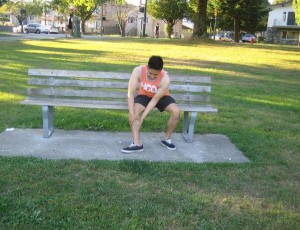In the scene of injury, the casualty’s muscles, ligaments, the joint capsule, and bursae, are assessed using a variety of tests and this examination includes functional tests. This is done by a paramedic or any clinician with first aid training. Functional tests identify the patient’s ability to move a body part through the ROM actively, passively, and against resistance. As with all tests, the noninjured side should be evaluated first to establish normative data. All motions common to each joint should be tested. Occasionally, it also may be necessary to test the joints proximal and distal to the injury to rule out any referred pain.

In performing a break test, overload pressure is applied with the joint in a neutral position to relax joint structures and reduce joint stress. The muscles are more effectively stressed in this position. When performing a break test, the limb is stabilized proximal to the joint to prevent other motions from compensating for weakness in the involved muscle. Resistance is provided distally on the bone to which the muscle or muscle group attaches; resistance should not be distal to a second joint. In a fixed position, the individual is asked to elicit a maximal contraction while the body part is stabilized to prevent little or no joint movement. For example, when testing the strength of the elbow flexors, the patient’s elbow should be positioned at 90°, with the upper arm stabilized against the body. While the patient maintains the arm in that position, the examiner applies downward overpressure on the distal forearm. Pressure should be held for at least 5 seconds and be repeated five or six times to indicate muscle weakening and the presence or absence of pain. A standardized grading system can be used to measure muscle contraction, but the results are negated if the contraction causes pain.
Testing resistance throughout the full ROM offers two advantages: First, a better overall assessment of weakness can be determined, and second, a painful arc of motion can be located which might otherwise go undetected if the test is only performed in the midrange. When performing resisted testing, the body segment is placed in a specific position to isolate the muscle or muscle group. The muscle or muscle group to be tested is placed in a stretched or elongated position. This position prevents other muscles in the area from performing the movement. Manual pressure is exerted throughout the full ROM and is repeated several times to reveal weakness or pain. The presence of pain during motion should be noted. In this manner, both subjective information (i.e., what the individual feels) and objective information (i.e., weakness) are gathered.
